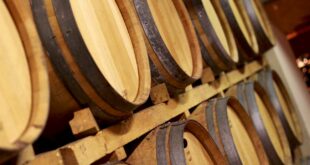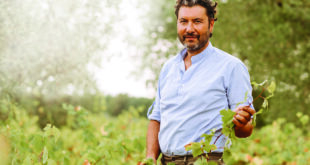Hello and welcome to my weekly dig through the pile of wine samples that show up asking to be tasted. I’m pleased to bring you the latest installment of Vinography Unboxed, where I highlight some of the better bottles that have crossed my doorstep recently.
This past week included a pretty interpretation of Roussanne from Troon Vineyard in Oregon that does a nice job of balancing its fruity and savory character, making for a tasty glass of wine that would be a great way to add a little variation to a white wine habit.
The bulk of this week’s tasting was a bunch of wines from the venerable Rhys Vineyards in the Santa Cruz Mountains. Rhys continues to be one of California’s most impressive wine producers, turning out exceptional Chardonnays, Pinot Noirs, Syrahs, and more recently, Sparkling Wines. The 2021 vintage yielded lean and focused Chardonnays and pure, gleaming Pinot Noirs that will likely age beautifully.
Of the three Rhys Chardonnays I’m recommending this week, my favorite was the Mt. Pajaro bottling, which comes from the Corralitos area of the Santa Cruz Mountains. It’s a densely planted vineyard that sits at about 900 feet of elevation, roughly 7 miles from the coast, with shallow topsoils over black and brown shale. The 2021 Pajaro Chardonnay is lean and bright and juicy with a hint of salinity that makes it mouthwatering. The Horseshoe Vineyard Chardonnay, and their Anderson Valley bottling are also worth checking out as well.
The three Rhys Pinot Noirs are each delicious, but, as usual, the black-labeled hillside bottling was the shining star. From the estate’s Alpine Vineyard, which sits between 1200 and 1490 feet in elevation and in places has a 40% slope, the Hillside bottling comes from the steepest, rockiest, lowest-yielding part of the vineyard. As usual, the 2021 vintage of this wine has a remarkable perfume and a lovely combination of delicacy and power. It remains quite distinct from the (also very good) standard Alpine Vineyard bottling. The non-vineyard-designate Anderson Valley bottling of Pinot Noir is also excellent.
Jumping a bit farther north, let’s look at the two latest releases from the Appassionata project, started by German winemaker Ernie Loosen in conjunction with J. Christopher wines. Loosen bought 40 acres of land in the Willamette Valley and decided to make Pinot Noirs (and Riesling) that he planned to age both in barrel and bottle for a significant length of time before release. His latest releases are the 2017 and 2019 vintage, kept for 5 and 3 years in the bottle respectively before their sale this year. They’re both admirable, delicious wines, but at this point I prefer the bright exuberance of the 2017 bottling.
Ending as usual with some darker reds, I can wholeheartedly recommend the 2021 vintage of Larkmead‘s “Firebelle” red blend of Cabernet and Merlot. It’s a study in elegance and beautifully managed tannins that will satisfy anyone who likes their Napa Cabernet with poise equal to its power.
I also have two wines from Baldacci Family to recommend, or rather, one to recommend and the other to lambast. The family’s Bordeaux-style red blend is brawny and chewy, with bright fruit and good acid, but needs a couple years to let the wood better integrate to the wine, as it sticks out a bit at the moment. That’s the recommendation. The family also produces a Cabernet Sauvignon they call The Thomas Collection, which they sell in sets of three bottles in a wooden box. This wine is decent—made in the style of ostentatious Napa Cabernet, with a surfeit of oak, extraction, and polish—but it is packaged in the most horrendously heavy, ostentatious bottle. A full bottle weighs nearly 4.4 pounds (2 kg)! Lowering glass weight is the single easiest thing a winery can do to reduce their carbon footprint, and bottles like this clearly demonstrate that a winery’s ego is more important to them than the environment. Shame on you Thomas…
Source : https://www.vinography.com/2024/02/vinography-unboxed-week-of-1-28-24



